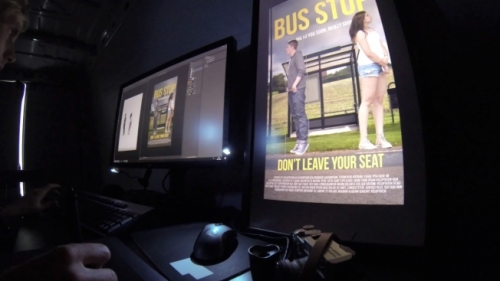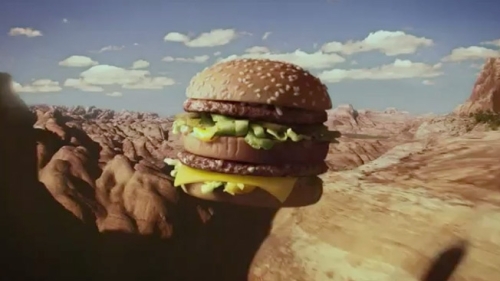
Douglas Van Praet argues that while decision making is governed by our emotions, brands should still provide people with a logical lifeline (but they should steer clear of research that lets the post-rationalizing tail wag the emotional dog):
One of the longest-running debates in marketing is whether to use a rational or emotional advertising approach in marketing–but cognitive science says that argument is pointless. While emotions overwhelmingly drive behavior, it is misguided to believe that thinking and feeling are somehow mutually exclusive. Emotion and logic are intertwined.
Behavioral science is now telling us that we don’t really have “free will.” We have “free won’t.” We can give in to the visceral impulses that drive us or choose to apply the brakes of rational restraint. While we can’t choose our emotions because they originate unconsciously, we can choose our conscious response to our feelings. This is essentially what consciousness is–a series of critical reflections and interpretations about how we are feeling.

When our emotional desires begin to shift toward a prospective brand, we align our reasons to be consistent with that intention. Our critical mind is always looking for evidence to support our beliefs. The stronger the emotion, the stronger the belief, and the greater the tendency is to seek out supporting evidence. We are not rational. We are rationalizers.
This predisposition is deeply ingrained in our everyday experiences. In one study that Harvard professor Ellen Langer conducted, researchers approached people in the act of using copying machines and asked if they could cut into the line and make photocopies. The experimental subjects were given different reasons for the request ranging from the sensible to the seemingly senseless, such as “because I’m in a rush” and “because I need to make copies.”
The researchers found out that compliance was higher when they gave a reason, almost any reason within limits. As Langer explained, “because an elephant is after me” didn’t cut it.

Reacting to logical interpretations at the expense of emotions
This tendency creates problems when people in survey research and focus groups seek out reasons to explain their feelings about new products, concepts, and ads. Self-reported research shines the spotlight on their logical interpretation of emotion, rather than the motivators of behavior, the emotions themselves. Respondents and subsequently marketers often end up inventing rationalizations instead of big ideas. Creativity suffers and concepts die prematurely as marketers try to react to the sometimes arbitrary reasons people make up.
James Dyson discovered this trap when he sought to revolutionize the way vacuum cleaners were made. His most notable innovation was the clear plastic collection bin that let people observe the dirt being vacuumed. Retailers warned him that it wouldn’t sell because, “no one wants to see dirt.”
So Dyson did testing that confirmed what any logically minded respondent would tell you in survey research: Dirt is disgusting; and nobody wants to see it. What a surprise! He chose to ignore the research, and a good thing he did. As Dyson now advises: “Don’t do market research–it will either tell you what you already know or put you off altogether.”
I have invented a seven-step process to shine light through behavioral science on how we decide.
1) Interrupt the pattern.
2) Create comfort.
3) Lead the imagination.
4) Shift the feeling.
5) Satisfy the critical mind.
6) Change the associations.
7) Take action.
Give people permission to take action
Step 5 is: Satisfy the critical mind. If you want people to buy what you’re selling, you have to give them logical permission to buy.
Dyson put his passions into his products, not the advertising. An inventor and industrial designer, Dyson founded his company on twin product pillars, equal parts engineering and design. Unlike many marketers, he actually built a better mousetrap. And the allure of the brand came from the product itself, as he turned an everyday household appliance into a fashion statement. Made of beautiful polycarbonate plastic with flecked aluminum and a glossy bright-hued sheen reminiscent of a Jeff Koons sculpture, they were sold even by clothing impresario and prolific fashion designer Paul Smith in his London store.

Because desire was baked into the design, Dyson didn’t need to employ glitzy branding or fancy ad campaigns. The ads were as straight as Joe Friday’s “Just the facts, ma’am” style of criminal investigation. His emotionally alluring product freed the brand’s advertising to focus on satisfying the critical mind.
Dyson never wavered from the facts about how his best-selling vacuum came to be. From the hardworking end product of 5,127 prototypes to a clear product demonstration, from technology that moves the air inside the vacuum at 924 miles per hour to a smart-sounding, technologically advanced name–G-Force Dual Cyclone, Dyson knew the least sexy aspects of his vacuum would sell the sexiness of its design. The end result is a remarkable perception that the vacuum cleaner is worth every penny of its premium price. Dyson now owns a brand image that is head and shoulders above the competition.
Even during a recession in 2010, the company reported that it had doubled operating profits in the past 12 months to £190 million, thanks to new products that are equal parts fashion and utility, and branding that is equal parts emotion and logic.
Your product may not be the result of over 5,000 refinements, but you still need to throw out a logical bone somewhere or they simply won’t bite. This can even be the retsyn in Certs breath mints or the “sheeting action” of Cascade dish detergent, just enough critical information to provide permission to believe the brand’s message.

All too often, marketers hand off an undifferentiated product to their ad agency and expect the advertising to compensate for that lack with an emotional impetus. This approach is doomed toward failure because we now live in a sea of both parity products and advertising messages.
So the next time you think about what approach to use in marketing, make sure both minds, logical and emotional, are satisfied somewhere in the mix. If you really want to increase your revenue, invest your innovation and passion into what you’re selling, not just how you’re selling it.
Douglas Van Praet is the author of Unconscious Branding: How Neuroscience Can Empower (and Inspire) Marketing. He is also executive vice president at agency Deutsch LA, where his responsibilities include group planning director for the Volkswagen account. Van Praet’s approach to advertising and marketing draws from unconscious behaviorism and applies neurobiology, evolutionary psychology, and behavioral economics to business problems.
(via Co.Create)






